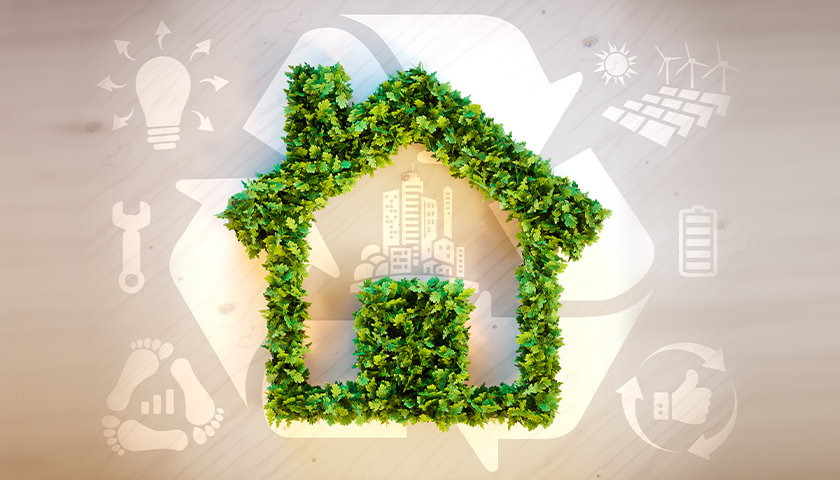In today’s rapidly evolving world, the need for sustainable living has never been more crucial. As we witness the effects of climate change and environmental degradation, adopting green practices has become a moral responsibility. Living green isn’t just a trend; it’s a conscious choice that can significantly impact the planet’s future. In this article, we’ll explore some simple yet impactful steps you can take towards leading a more sustainable life.
Table of Contents
- Introduction
- Understanding Sustainability
- Energy Conservation at Home
- Tips for Efficient Lighting
- Power-Reducing Appliances
- Unplugging Electronics
- Embracing Renewable Energy
- Solar Power for Homes
- Wind Energy Possibilities
- Reducing Carbon Footprint
- Sustainable Transportation
- Plant-Based Diet Benefits
- Minimalist Lifestyle
- Waste Management and Recycling
- Importance of Recycling
- Reducing Single-Use Plastics
- Water Conservation
- Fixing Leaks and Drips
- Efficient Water Usage
- Creating Sustainable Habits
- Shopping Responsibly
- Supporting Local and Organic
- Green Gardening
- Benefits of Home Gardens
- Organic Pest Control
- Promoting Eco-Friendly Clothing
- Fast Fashion vs. Sustainable Fashion
- Thrifting and Upcycling
- Raising Awareness in the Community
- Hosting Green Workshops
- Social Media Activism
- Incorporating Sustainability at Work
- Remote Work Advantages
- Office Energy Efficiency
- Teaching Children About Green Living
- Nature Education
- Lead by Example
- Benefits of Living Green
- Environmental Impact
- Health and Well-being
- Conclusion
Introduction
Living green is all about making mindful choices that reduce harm to the environment. By making small changes in our daily routines, we can collectively make a big difference. This article will guide you through various aspects of sustainable living, from energy conservation and waste reduction to water preservation and more.
Understanding Sustainability
Sustainability means meeting the needs of the present without compromising the ability of future generations to meet their own needs. It’s about finding a balance between economic, social, and environmental factors.
Energy Conservation at Home
Tips for Efficient Lighting
Switching to energy-efficient LED bulbs not only reduces energy consumption but also saves money on your electricity bill. Additionally, remember to turn off lights when not in use.
Power-Reducing Appliances
Invest in appliances with high energy efficiency ratings. These appliances consume less power, contributing to a greener lifestyle.
Unplugging Electronics
Even when turned off, electronics consume energy if they’re plugged in. Unplug chargers, devices, and appliances when they’re not actively being used.
Embracing Renewable Energy
Solar Power for Homes
Installing solar panels on your roof harnesses the power of the sun, significantly reducing reliance on non-renewable energy sources.
Wind Energy Possibilities
If suitable, consider installing a small wind turbine to generate clean energy for your home.
Reducing Carbon Footprint
Sustainable Transportation
Opt for walking, biking, carpooling, or using public transportation instead of driving alone. Electric and hybrid vehicles are also great choices.
Plant-Based Diet Benefits
Reducing meat consumption and embracing a plant-based diet reduces the demand for livestock farming, which is a major contributor to greenhouse gas emissions.
Minimalist Lifestyle
Owning fewer possessions and simplifying your life not only reduces consumption but also encourages a focus on experiences over material things.
Waste Management and Recycling
Importance of Recycling
Recycling materials like paper, glass, and plastic helps conserve resources and decrease the amount of waste in landfills.
Reducing Single-Use Plastics
Say no to single-use plastics like straws, bags, and containers. Opt for reusable alternatives to minimize plastic pollution.
Water Conservation
Fixing Leaks and Drips
A dripping faucet can waste a significant amount of water over time. Fix leaks promptly to prevent unnecessary water wastage.
Efficient Water Usage
Collect rainwater for gardening, and be conscious of water usage when doing daily tasks like washing dishes or showering.
Creating Sustainable Habits
Shopping Responsibly
Support companies that prioritize sustainable practices and ethical production. Buy products with minimal packaging.
Supporting Local and Organic
Purchase locally grown and organic foods to support local farmers and reduce the carbon footprint of transporting goods long distances.
Green Gardening
Benefits of Home Gardens
Home gardens promote biodiversity, provide fresh produce, and reduce the need for extensive transportation of food.
Organic Pest Control
Avoid chemical pesticides and opt for organic methods to control pests in your garden.
Promoting Eco-Friendly Clothing
Fast Fashion vs. Sustainable Fashion
Choose quality over quantity when it comes to clothing. Fast fashion contributes to waste, while sustainable fashion emphasizes longevity.
Thrifting and Upcycling
Visit thrift stores and consider upcycling old clothing to give them new life, reducing textile waste.
Raising Awareness in the Community
Hosting Green Workshops
Organize workshops in your community to educate others about sustainable practices and inspire positive change.
Social Media Activism
Use your online presence to share information, raise awareness, and encourage others to adopt eco-friendly habits.
Incorporating Sustainability at Work
Remote Work Advantages
Remote work reduces commuting, which in turn decreases carbon emissions and contributes to a healthier environment.
Office Energy Efficiency
Implement energy-saving practices at the workplace, such as turning off lights and computers when not in use.
Teaching Children About Green Living
Nature Education
Expose children to the wonders of nature to foster an appreciation for the environment from a young age.
Lead by Example
Children learn by observing. Set a green example in your daily life to instill sustainable values in the next generation.
Benefits of Living Green
Environmental Impact
By adopting green practices, you contribute to cleaner air, reduced pollution, and the preservation of natural resources.
Health and Well-being
Sustainable living often involves healthier habits, such as consuming fresh, locally grown foods and being physically active.
Conclusion
Living green is a journey that requires commitment and effort, but the rewards are immense. By following these simple steps, you can significantly reduce your ecological footprint and contribute to a more sustainable future for our planet.
FAQs
- What does “sustainability” mean? Sustainability refers to meeting current needs without compromising the ability of future generations to meet their own needs.
- How can I conserve energy at home? You can conserve energy by using energy-efficient lighting, opting for power-reducing appliances, and unplugging electronics when not in use.
- Why is recycling important? Recycling is crucial as it conserves resources, reduces waste in landfills, and lessens the environmental impact of producing new materials.
- How does a plant-based diet help the environment? Plant-based diets require fewer resources and produce fewer greenhouse gas emissions compared to diets heavy in




